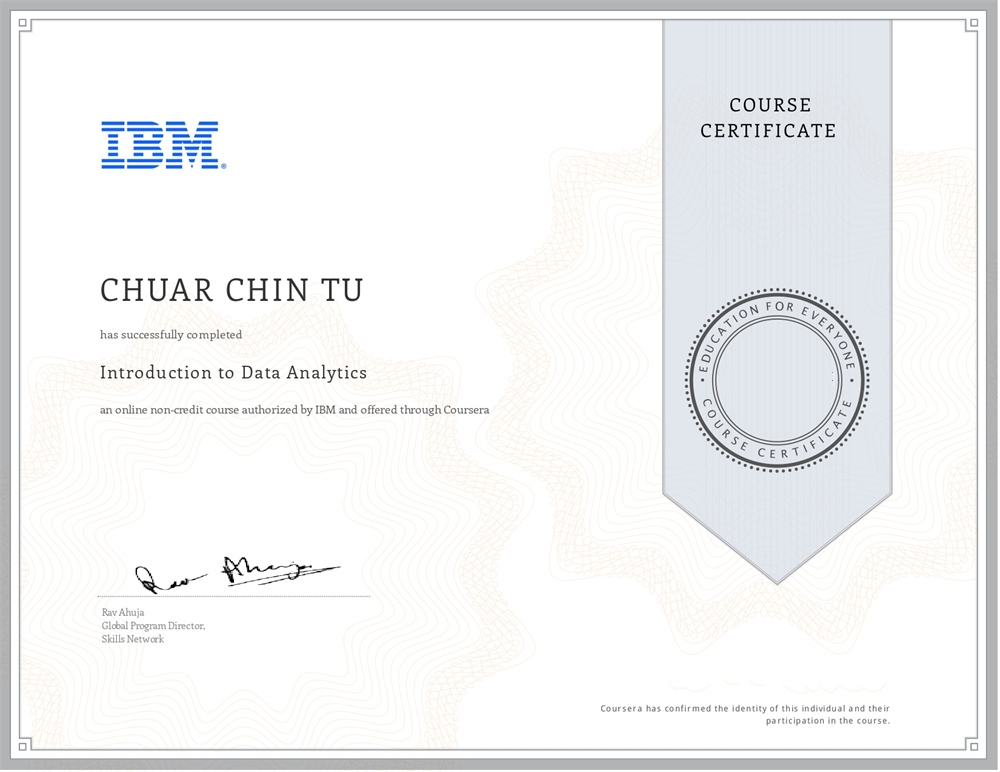Eric Chuar has completed the Introduction to Data Analytics for Personal & Professional Productivity and received a certificate from IBM.
SCHOOL:
IBM
GRADUATED:
2018
DURATION:
6 Months

Data Analytics Skills Gained
Explain what Data Analytics is and the key steps in the Data Analytics process
Describe the different types of data structures, file formats, and sources of data
Differentiate between different data roles such as Data Engineer, Data Analyst, Data Scientist, Business Analyst, and Business Intelligence Analyst
Describe the data analysis process involving collecting, wrangling, mining, and visualizing data
Course Perspective
Just wrapped up the Introduction to Data Analytics course, and I’ve got a lot to unpack. As someone who’s always hands-on before jumping into any course, I’ve got my own way of doing things. Certificates are fine and all, but it’s the skills and know-how that matter most, especially when you’re in digital marketing and programming like I am.
Why this course? Analytics is the heartbeat of marketing, and let’s be real, it’s not everyone’s cup of tea. I’ve always got this itch to share what I learn, and this course added a whole lot to my toolbox. Plus, being rooted in Malaysia and Singapore for years has given me a unique perspective—it’s not just about business; it’s about community. And now, with a family and a kid, my drive to share knowledge has kicked into overdrive.
Alright, let’s break it down:
- What’s Data Analytics?: The course started by defining what data analytics actually is and walked us through the key steps in the analytics process. Understanding how to turn data into actionable insights is priceless, especially in my main gig in digital marketing.
- Different Data Roles: This was an eye-opener. The course broke down the roles of Data Engineer, Data Analyst, Data Scientist, Business Analyst, and Business Intelligence Analyst. Knowing who does what helps you collaborate better on projects.
- Data Structures and Formats: We went through the kinds of data structures, file formats, and sources where data can come from. This is the nitty-gritty stuff that helps you set up your data pipeline right.
- The Analysis Process: Finally, we got into the actual steps involved in data analysis—collecting, wrangling, mining, and visualizing data. This is where the rubber meets the road.
All in all, this course was an enlightening journey through the world of data analytics. I’m stoked to apply these insights, especially in my digital marketing projects. And you better believe I’ll be sharing this knowledge, because learning’s not much good if you’re keeping it all to yourself, right?
